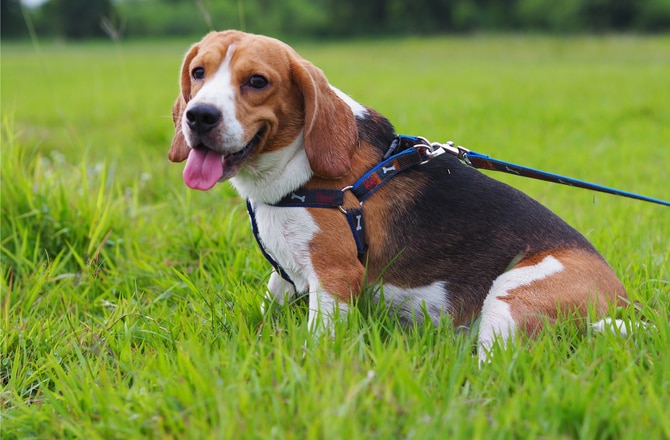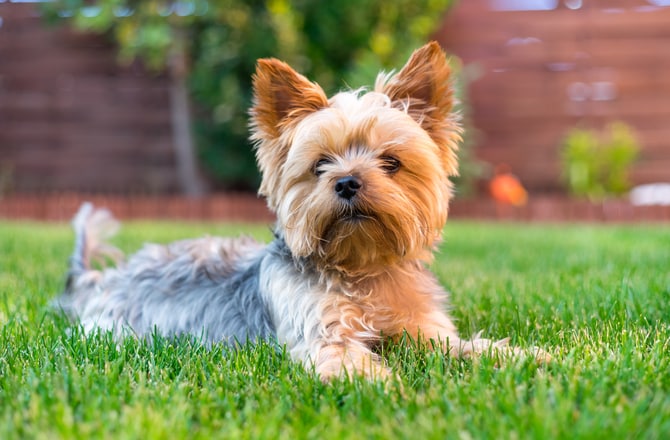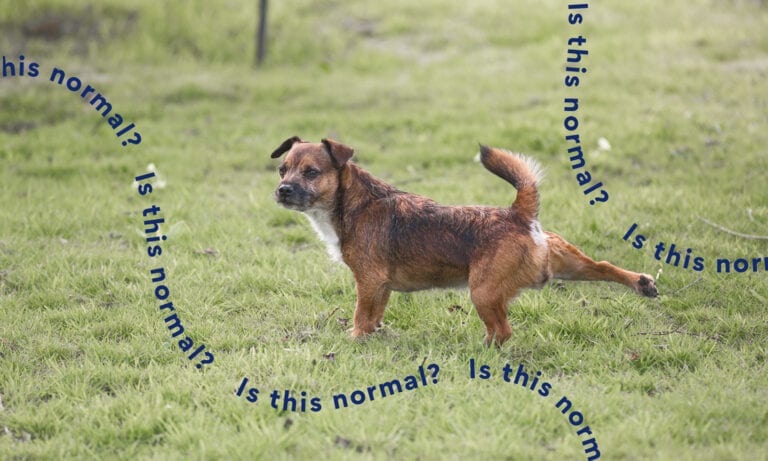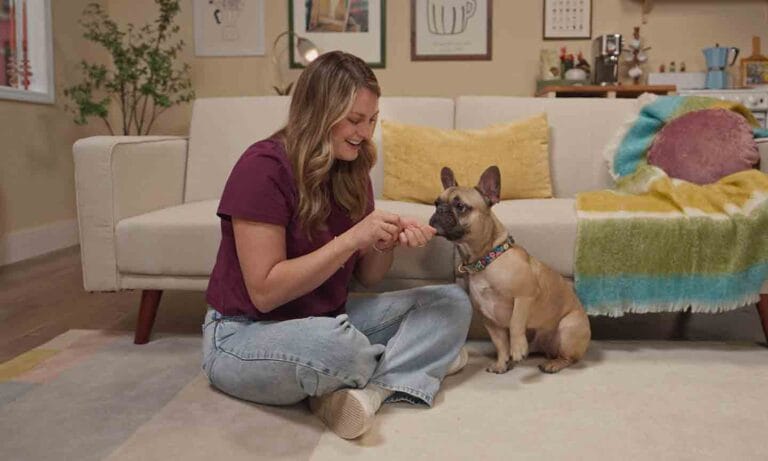If you’ve got a dog, you’ve got bills. From the necessary health and wellness vet visits to quality dog food and treats to all of the dog toys that make life fun, pet parenting can get pricey. The following MacGyver-style training hacks, for both pups and adult dogs, prove that best things in your furry best friend’s life are free!
Use a Wooden Spoon for Leash Training

Does your new puppy have a hard time walking on his leash? Believe it or not, you can turn a humble wooden kitchen spoon into a powerful training tool to tackle this common challenge. Simply coat the spoon with peanut butter, put your pup’s leash and collar on him and place the spoon a few steps ahead of the puppy as you walk. Let him have a few licks as they two of you move together, then lift the spoon up and encourage him to walk several steps without it.
Repeat the process of allowing your pup to lick the spoon for a few steps then pulling up the spoon. Your pup will be so focused on catching up to the delicious spoon that he’ll forget to be worried about his new leash and collar.
Turn Bottles and Boxes into Puzzle Toys

Puzzle toys that keep your pup’s brain engaged can get pricey, but you can DIY these impressive brain teaser toys for free:
- Wash out an old soda bottle, cut two tiny holes on opposite sides of the body of the bottle (or more, depending on how challenging you want to make it), fill it with goodies that can fit through the holes, then screw the cap back on. This simple activity toy encourages your dog to kick and chase the bottle around to get the dog treats to come out. You can also fill the toy with your dog’s kibble to slow down meal times.
- Take several empty cardboard boxes of varying sizes and place treats or favorite toys in each one. Then close the lids so that each one is more challenging to open than the last. Make the first box very simple for your dog to paw open by just pulling the flaps down, then make the next one a more challenging by tucking the flaps into each other, then take the final box, tuck the flaps tightly and turn it upside down so that the opening is on the ground. Your dog will enjoy figuring out how to use his paws and nose get to the goodies.
DIY an Agility Course

Want to get see if your dog is a canine athlete? Test his skills on a DIY mini agility course, inside the house or out. It’s easy to create a challenging obstacle course with a little creativity. The goal is to use actual agility equipment as a guide, then hack your way to an easy (and free!) version of it:
- Use two kitchen chairs with a broom balanced between them to create a hurdle. Start with the broom low on the spindles beneath the seat, and as your dog gets better at leaping over it, raise it to the seat height.
- Set up four chairs facing each other with a dog-sized space between them and put a blanket over the seats to create a tunnel.
- Secure a child’s hula hoop between two chairs for a ground-level jump hoop, then place books beneath the hoop to raise it up as your dog gets comfortable jumping through it.
- Use an ottoman as a pause table between the obstacles.
- Set up weighted plastic cups (you can use sand or rocks) for a simple weave course.
Make Your Own Hands-Free Leash

Ever wish that you had an extra hand when working on leash manners? Sure, you can invest in a pricey waist leash that frees up both hands during your walk, or you can hack your own with household items. Find your dog’s old collar (make sure it’s still sturdy), thread the handle of your dog’s leash through it and then clip the collar to your belt. Voila, hands-free walking!
Or grab a carabiner – which has quite a few dog-related uses, like securing cabinets and dog crate doors – clip it to your dog’s leash and then attach it to your belt. Just be careful as both you and your dog learn to navigate the new walking system, as there are inherent challenges to hands-free walking, like getting tangled in the leash or tripping over it.
Create Your Own Treat Dispenser

Sometimes you need a super high-value treat for training, but you don’t want to surrender your pocket to greasy goodies like cheese or chicken. A DIY squeeze tube gives your dog a quick shot of deliciousness and keeps your fingers and pockets clean, plus it’s reusable. To make one simply buy a soft plastic refillable tube or bottle (like the type you can use for toiletry products when you travel or camp) and load it up with a paste made of peanut butter, canned pumpkin, or meat-based baby food.
Keep in mind that the size of the opening on the tube and the consistency of your paste both play an important part in squeeze tube success. If the hole is too wide your paste might leak out, and if it’s too small your dog might not get enough of the goody. Similarly, if your paste is too thick you’ll be struggling to squeeze it out, and if it’s too thin it might leak. A well-made squeeze tube is small enough to fit in your pocket, can be capped when not in use, and is filled with something that’s easy to dispense that your dog absolutely loves.
Turn Anything into “Place”

You want your dog to do his own thing while you have dinner, but he always seems to migrate in your direction until his head is resting on your knee as you eat, begging for handouts. If you’ve got an old bathmat, blanket or towel you can create an “anchor” spot for your dog that will keep him in place until you release him.
Grab an old linen that’s large enough for your dog to rest comfortably on (and is thick enough that he can tell he’s actually on it!) and teach him to lie down on it when you tell him “bed” or “place.” Once your dog is reliably getting on the mat when you ask, gradually increase the time that he hangs out on it. Then, get him used to resting on it in various spots in your house, so that you can use it in a variety of situations.
Once your dog understands the process, ask him to go to his spot then give him a treat-stuffed busy toy to keep him happily occupied as you eat dinner. You can also use his dog bed for this exercise, but the beauty of a blanket or bathmat is that you can easily fold it up and bring it with you when you visit friends.

Victoria Schade is a dog trainer, author & speaker who has contributed to The Washington Post, Martha Stewart, and other publications.
Share:









